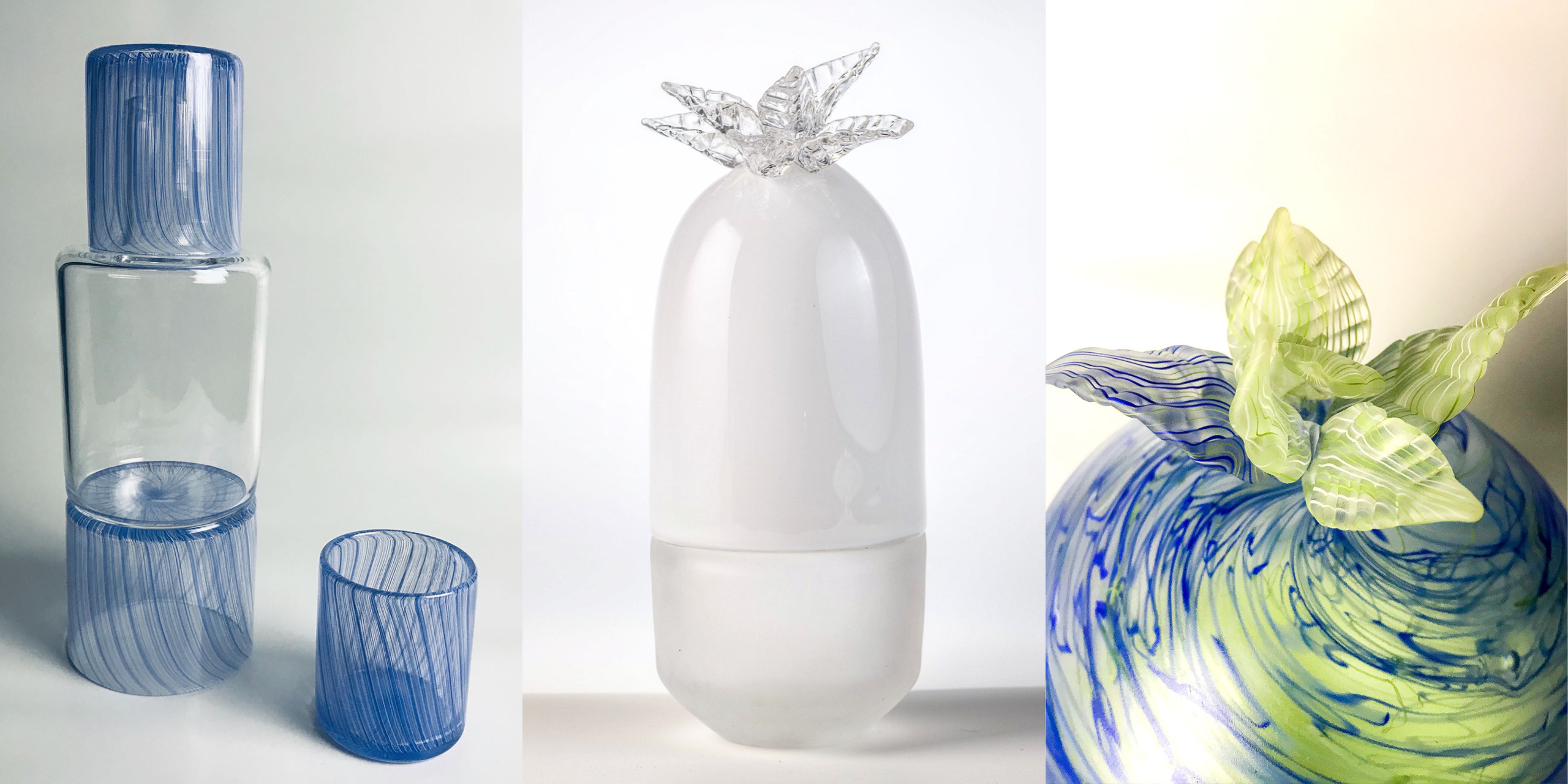Meet the Maker: Jonathan Bolivar
Originally from Tulsa, Oklahoma, Jonathan Bolivar of Glass Bolivar has been blowing glass for six years. His glass blowing journey began at Tulsa Glassblowing School, where he learned from and assisted Cedric Mitchell, and continued in Kansas City, Missouri at 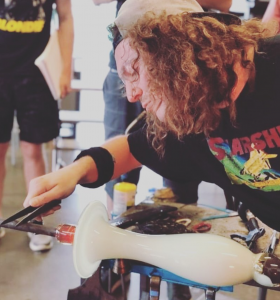 Monarch Glass Studio, where his focus was on production and improving his design process. After completing his time at Monarch Glass Studio, Jonathan accepted a position as a Technical Apprentice at Pittsburgh Glass Center. While at PGC, he has been expanding his knowledge of glass, honing his craft, and creating elegant drink ware, vibrant pumpkins, and stunning glass art.
Monarch Glass Studio, where his focus was on production and improving his design process. After completing his time at Monarch Glass Studio, Jonathan accepted a position as a Technical Apprentice at Pittsburgh Glass Center. While at PGC, he has been expanding his knowledge of glass, honing his craft, and creating elegant drink ware, vibrant pumpkins, and stunning glass art.
His gorgeous glass home goods and pumpkins will be available at our Museum Shop, starting during our Holiday Mart, this weekend, Friday, November 6 through Sunday, November 8. To have the opportunity to add one of Jonathan’s works to your collection, to purchase one of his pumpkins or pieces as a gift, or to meet him in person, register to shop during the Museum Shop Holiday Mart!
Find out more about glass artist Jonathan during the following interview, where he reveals why he’s drawn to the art of glass blowing, what motivates him, his favorite piece to create and more!
What is the first thing you can remember making?
 In general, I’ve always enjoyed making and creating things. Growing up I used to make my own action figures out of paper. If you mean “first thing made in my medium,” the first thing I remember making is a clear glass cup.
In general, I’ve always enjoyed making and creating things. Growing up I used to make my own action figures out of paper. If you mean “first thing made in my medium,” the first thing I remember making is a clear glass cup.
What drew you to working with glass?
I tend to pick up most things quickly. Glass, however, proved to be a challenge that most people give up on. I watched those who started to blow glass around me, give up quickly, or lose the desire to make an effort to improve. I knew immediately that I wanted to master this challenging craft. Its intense heat and demand for focus, provide elements of danger and excitement. These qualities removed my mind from any “day to day” problems concerning me. I loved the feeling of being in the moment, creating glass.
Please, describe your work:
My work is almost all specifically based in design. Using both shape and pattern, I enjoy creating a type of balance for viewers. My shapes stem from my drive to employ clean symmetry, as it is one of the most complicated qualities to feature in handmade objects. Employing centuries old techniques, I aim to use classic design, while adding a modern twist. Growing up around many Art Deco influences in my hometown’s architecture, I feel that the patterning and angular shapes filled my mind. Considering Tulsa isn’t like New York City, I spent much time around nature when possible. Hiking in the woods and swimming in the river gave me a love for nature I aim to apply to my work. Lately I’ve been applying sculptural elements emulating nature to my angular, symmetrical shapes. I enjoy both their contrast and compliments to one another.
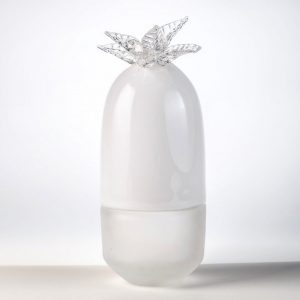 What is your motivation for creating these pieces?
What is your motivation for creating these pieces?
My work is simply pushing my limitations of craftsmanship to create a unique style. I hope this style holds elements of all the design and architecture that inspires me, while forever giving a nod to the beauty of nature. My products are rewarding, in that I create a functional object to be seen and used by another. Knowing that I am able to design someone’s favorite drinking glass or an object that makes their space feel more like their own is rewarding as a maker. I like to think it’s what a composer feels, as the symphony plays the final sounds, when they scan the crowd and distinguish the people in the audience who felt every note.
Please describe the process of creating a glass pumpkin?
Creating a glass pumpkin, especially a unique one requires years of making pumpkins. Every season, pumpkins are in demand, giving glass blowers a chance to hone in on the design they feel is best.
Pumpkins are either blown bubbles or solid glass. Regardless of which, they both start as a “gather” of molten glass, which is added onto by gathering more glass until the desired amount is reached. Once the gathering is finished, chunks of glass color are added by rolling the fresh molten glass in “sprinkles” of colored glass called “frit.” The color is produced by metal oxides added to the glass, that are melted together to create a color unique to the chemistry of the elements used. Once the color has melted in with the original gather, the glass is shaped to fit into what’s called an optic mold. This mold is used to produce the ridges you see on most pumpkins, and many other forms of glass art. By creating texture over the surface of the glass, the light bends as it passes through the ridges, changing the optics in the piece itself. Once the ridges are applied, the pumpkin is shaped and is separated from the blowpipe using a clean break. That break is where the glass stem is then applied. Using its high heat and malleability, the stem is strategically designed to match the pumpkin.
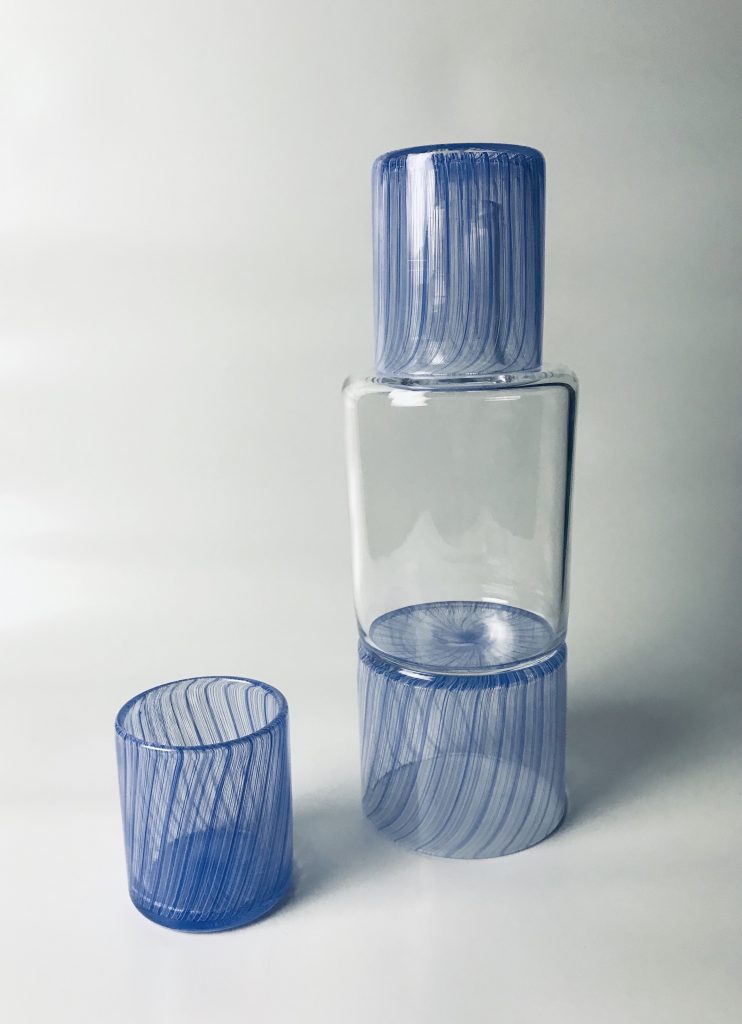 What is your favorite product/piece to make and why?
What is your favorite product/piece to make and why?
I enjoy the process of designing and creating drink ware. While some artists thrive on allowing the glass to take control and create one time pieces of work, I live for the challenge of precision. Drink ware demands specifications that require me to consider factors such as volume and function. If my measurements are not precise, I cannot guarantee a cup will fit 12oz nor a decanter 750ml. If I let art overtake functionality, I cannot ensure proper aeration or a nice pour from my decanters. These require me to push my creativity, while consistently maintaining both skill and technique. The handmade look is always there, but I enjoy challenging eyes to recognize it.
Describe for us the atmosphere when you are at work?
Blowing glass demands my full attention. It requires I be present in each moment to respond to how the glass is moving. I must withstand heat, communicate to one or more assistants, and keep up with all the physical demands along the way. Without precise timing and movements, the piece loses likelihood of success. Most art forms allow you to step away during the creative process and come back as many times as desired. Since glass blowing does not, the hot shot is a place of high energy. Having performed in different athletics and worked in a kitchen, the atmosphere is similar in that all people are involved in a common goal. Each mind becomes focused on their task to produce a successful outcome. Without each person’s expertise and focus, the goal cannot be accomplished. This creates a team dynamic unseen in most art forms, but common in other professions.
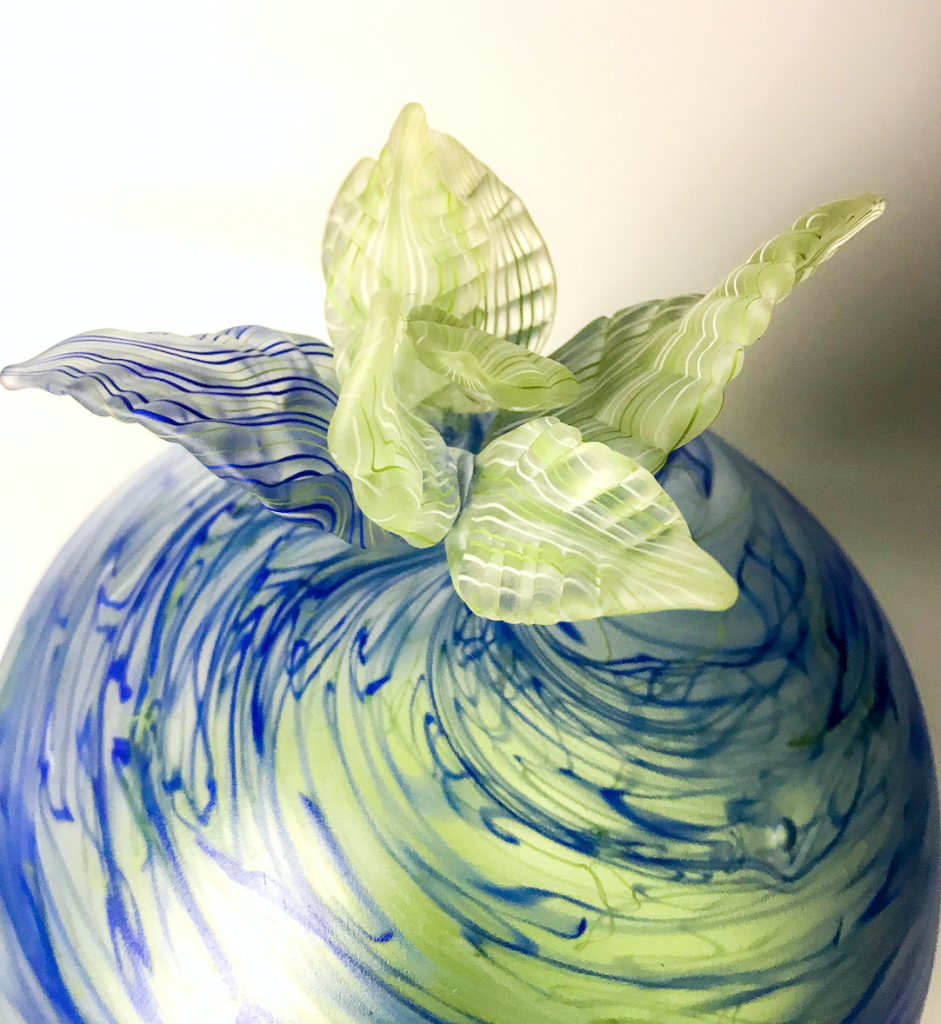
What is the most fulfilling part about your work?
Working with other glass blowers and glass artists has proven to be one of the best parts of this profession. Without each other, we cannot possibly accomplish our goals and continue pushing the limits of this medium. Within the glass community, we are constantly sharing techniques and ideas, which allows each glass blower to further their personal growth and creativity. Since we are a part of each other’s creative processes, we become key components of each other’s work as well. This creates a dynamic that helps us push each other to stay true to our paths, while making glass we feel belongs in the world with you.
